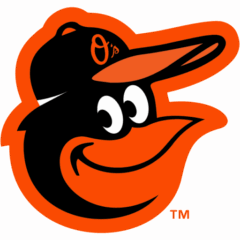Third Base at Home: Drills to Help Your Player Own the Hot Corner
They don’t call it the Hot Corner for nothing.
Third base is where the hardest-hit balls go. It’s a position for players with quick reflexes, strong arms, and serious confidence. A great third baseman can shut down bunts, field missiles, and make game-changing plays across the diamond.
If your player is working toward mastering third base, you don’t need a full field or team practice every day. A glove, a ball, and 15–20 minutes at home is more than enough to build skills, confidence, and baseball IQ.
💪 What Makes a Great Third Baseman?
Third basemen at the 10U–12U level should focus on:
- Fast reactions and glove control
- Charging bunts and soft rollers
- Strong throws across the diamond
- Backhand fielding and staying low
- Situational awareness (runners, force plays, bunt defense)
It’s a position that blends toughness with technical skill—and it’s a great one to train at home.
🏡 Third Base Drills to Do at Home
You don’t need a fancy setup. These drills work in a garage, driveway, yard, or even inside with a foam or tennis ball.
1. Reaction Ball Drill
Goal: Build fast reflexes for hard-hit grounders and liners.
How to do it:
- Use a reaction (bouncy) ball or tennis ball.
- Toss it off a wall or hard surface at different speeds and angles.
- Your player reacts and catches or blocks it.
Tip: Challenge them by mixing high, low, and off-center throws. You can even stand close and do rapid-fire tosses.
2. Backhand & Glove Side Work
Goal: Teach clean glove work on both sides of the body.
How to do it:
- Roll ground balls slightly outside the player’s glove side, then to their backhand side.
- Focus on staying low, angling the body, and working through the ball with the glove.
Why it’s key: Third basemen have to field bullets to both sides and make quick throws—being strong on both sides is a must.
3. Slow Roller / Bunt Charge Drill
Goal: Practice attacking bunts and soft grounders with control.
How to do it:
- Roll a slow ground ball toward your player.
- They charge the ball, scoop it cleanly with their glove or bare hand, and simulate a fast throw to first.
Focus on:
- Staying low
- Moving through the ball
- Controlled, quick footwork
Variation: Use a stopwatch to make it fun—“Can you scoop and throw in under 3 seconds?”
4. Wall Throw Accuracy Drill
Goal: Build arm strength and accuracy for long throws across the field.
How to do it:
- Set a target on a wall (use tape, chalk, or a bucket).
- Have your player simulate fielding a grounder, set their feet, and make a strong, accurate throw to the target.
Tip: Emphasize proper throwing mechanics—step, turn, follow through.
5. Barehand Transfer Drill
Goal: Build fast transitions for bunt plays and slow rollers.
How to do it:
- Roll soft grounders or bunts toward your player.
- They field it barehanded, then simulate a quick throw to first.
Key coaching points:
- Use fingers, not the palm
- Don’t slap at the ball—scoop it with rhythm
- Move through the ball, not just to it
🧢 Parent Tips
- Reps over time: 15 minutes a few times a week is gold—don’t overdo it in one day.
- Keep it fun: Add timers, point systems, or “game scenarios” to keep kids engaged.
- Praise grit: Third base is a tough spot—celebrate hustle and courage just as much as clean plays.
- Watch the pros: Watch MLB third basemen with your player. Talk about footwork, glove angles, and game decisions.
Final Word
Third base is where instincts meet intensity. It’s a position that challenges young players to be bold, fast, and dependable. And the good news? You can help build all of that right from your driveway or backyard.
So grab your gloves, roll some grounders, and help your player become a Hot Corner hero—one rep at a time.
